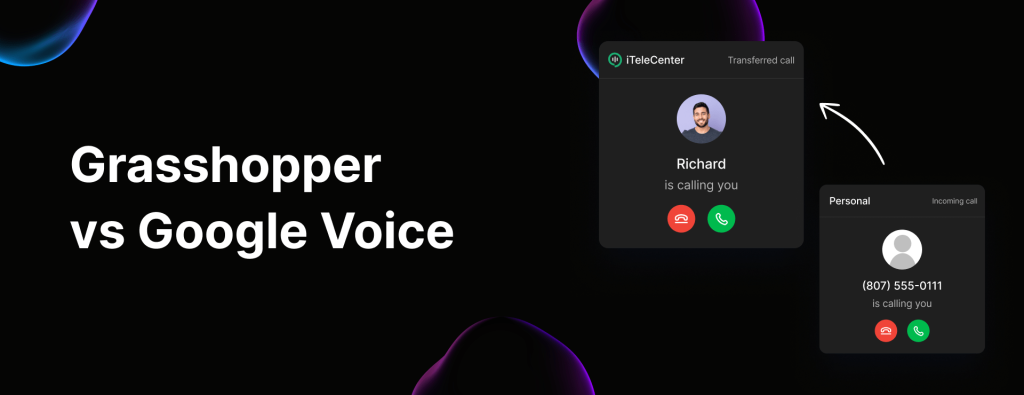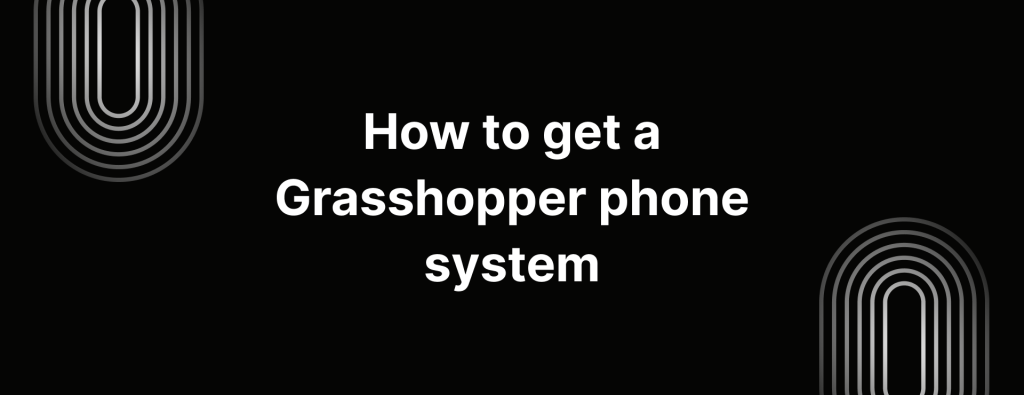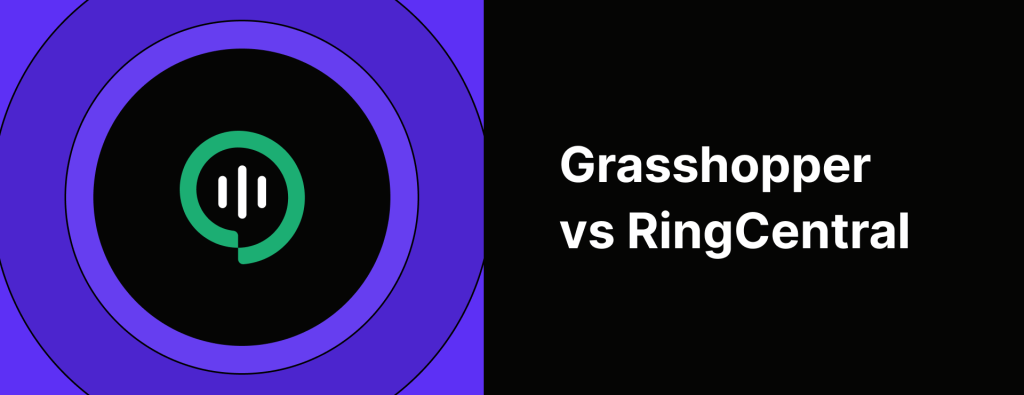Canada phone number format
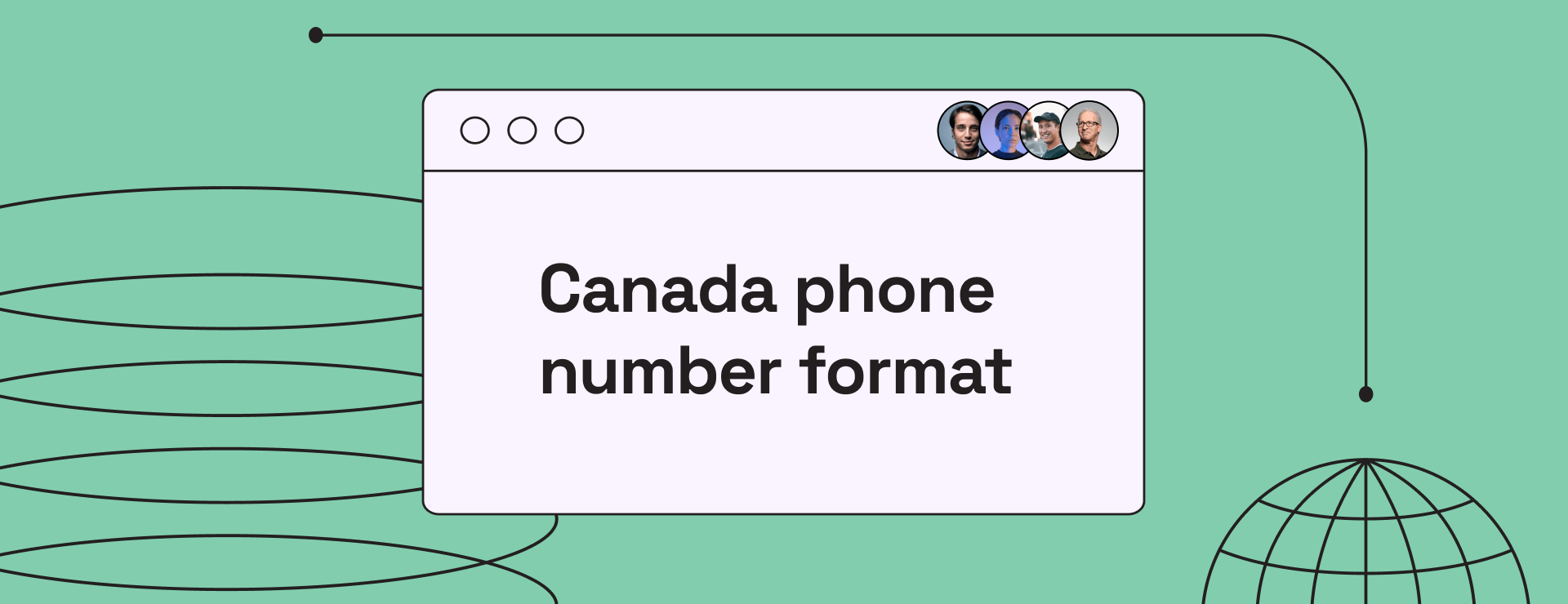
Do you have friends, relatives, or a client base in Canada? Then, connecting with them regularly over a call might be slightly financially draining for you.
However, this is something that cannot be compromised, as calling has been one of the most common and go to ways of connecting with people. How would you feel if you found out there is a way to connect with your contacts in Canada without having to bear big charges?
Well, it is simple: get yourself a Canadian phone number. You must be thinking, “Don’t you have to be in Canada to have a Canadian phone number?” The answer to this is no, getting a Canadian number with a local area code is possible.
But first, let’s discuss what is the Canada phone number format and how you can get a Canadian number.
What is the Canada phone number format?
Canada follows the North American Number Plan (NANP). This plan is an integrated telephone numbering plan used in over 20 North American countries, including the US. The plan operates on a fixed length format of 10 digits as a 3 digit area code, a 3 digit exchange code, and a 4 digit station or line code.
Canadian phone numbers are 11 digits long, and a common Canadian cell phone number format can look like +1 (XXX) XXX-XXXX or +1-XXX-XXX-XXXX.
Canada phone number format consists of 4 main components:
- Country code: Canada’s country code is +1, which is basically the numeric graphical code for the country. If you are dialing from a landline, then you will have to use 011 before the country code.
- Area code: An area code is a 3-digit number assigned to specific geographical regions of the country. Smaller areas might share an area code, while big cities can have multiple codes. As of July 2024, Canada has 64 area codes.
- Central office code: Central office code is used to identify specific network exchanges within the bigger area codes. It is of 3 digits and is also known as an exchange code.
- Line number: Line number is the last 4 digits of a 10-digit Canadian number. It represents the specific line connected to the telephone network.
What are the area codes in Canada?
An area code is an initial set of 3 digits after the country code in the phone number format. It is used to identify specific locations of the number according to geographical regions. Here’s a detailed table of major cities with Canada phone codes:
| Province/Territory | Area code | Main cities |
|---|---|---|
| Alberta | 403, 587, 825 | Calgary, Edmonton, Red Deer |
| Manitoba | 204, 431 | Winnipeg, Brandon, Thompson |
| New Brunswick | 506 | Fredericton, Moncton, Saint John |
| British Columbia | 236, 250, 604, 672, 778 | Vancouver, Victoria, Surrey, Kelowna |
| Newfoundland and Labrador | 709 | St. John’s, Corner Brook |
| Nova Scotia | 782, 902 | Halifax, Sydney, Dartmouth |
| Prince Edward Island | 782, 902 | Charlottetown, Summerside |
| Ontario | 226, 249, 289, 343, 365, 416, 437, 519, 548, 613, 647, 705, 807, 905 | Toronto, Ottawa, Hamilton, London, Windsor, Thunder Bay |
| Saskatchewan | 306, 474, 639 | Saskatoon, Regina, Prince Albert |
| Quebec | 367, 418, 438, 450, 514, 579, 581, 819, 873 | Montreal, Quebec City, Laval, Sherbrooke, Gatineau |
| Nunavut | 867 | Iqaluit, Rankin Inlet |
| Yukon | 867 | Whitehorse, Dawson City |
| Northwest Territory | 867 | Yellowknife, Inuvik |
What are the different types of Canada phone number format with examples
From local phone numbers to vanity numbers, there are various types of different phone number formats available in Canada for different communication needs.
You can read the formats as “(+1) Country Code+ (XXX) Area Code +(XXXX) Local Number”. Some of those formats are:
Local phone number (Landline)
These are standard landline numbers that are associated with specific areas or cities in Canada. To dial a landline number in Canada from outside North America, you will have to add 011 as a dialing prefix.
Format
For local callers -> +1 (Area Code) XXX-XXXX
For international callers -> 011 + 1 (Area Code) XXX-XXXX
Example
For local callers -> +1 416 555-7890 (Toronto)
For international callers -> 011 1 416 555-7890 (Toronto)
Mobile phone number
These are the most popular and widely used numbers in Canada. Mobile phone numbers have a different area code from landline numbers. The Canada cell phone number format is given below:
Format
For local callers -> +1 (Area Code) XXX-XXXX
For international callers -> 011 + 1 (Area Code) XXX-XXXX
Example
For local callers -> +1 604 555-6789 (Vancouver)
For international callers -> 011 1 604 555-6789 (Vancouver)
Toll-free number
Toll-free numbers in Canada are numbers that allow Canadians to reach businesses and service lines without any additional incurring charges. These numbers are commonly used for customer service and support lines to give customers an easy way to reach the companies.
Format
For local callers -> +1 (Toll-Free Area Code) XXX-XXXX
For international callers -> 011 + 1 (Toll-Free Area Code) XXX-XXXX
(Note: Some toll-free numbers may not be accessible from outside North America.)
Example
For local callers -> +1 800 555-1234 (Toll-Free)
For international callers -> 011 1 800 555-1234 (Toll-Free)
Vanity number
Vanity numbers are often used by businesses to enhance their branding. These numbers may have words included in their formats, which can be business names or services they offer. These numbers are also super easy to remember.
Format
For local callers -> +1 (Toll-Free or Local Area Code) CUSTOM
For international callers -> 011 + 1 (Toll-Free or Local Area Code) CUSTOM
Example
For local callers -> +1 800 FLOWERS (Toll-Free)
For international callers -> 011 1 800 FLOWERS (Toll-Free)
Example of Canada phone number format across various cities with examples
Canada has the same phone number format for both landline and mobile phone numbers. An exit code is not needed to make local calls, but you would need it while dialing internationally. To read a Canada phone number format example from the table, here are the key assumptions:
- Exit code: XXX
- Country code: 1 (the country code for Canada and US)
- Area code: In brackets (e.g.,(416))
- 7-digit landline number: 123-4567
- 7-digit mobile number: 765-2244
Here are a few examples of what a typical Canadian mobile and landline number may look like when you are dialing different cities as an international caller:
| City | Landline number | Mobile phone number |
|---|---|---|
| Toronto, ON | XXX-1-(416) 123-4567 | XXX-1-(416) 765-4321 |
| Vancouver, BC | XXX-1-(604) 123-4567 | XXX-1-(604) 765-4321 |
| Ottawa, ON | XXX-1-(613) 123-4567 | XXX-1-(613) 765-4321 |
| Winnipeg, MB | XXX-1-(204) 123-4567 | XXX-1-(204) 765-4321 |
| Montreal, QC | XXX-1-(514) 123-4567 | XXX-1-(514) 765-4321 |
How to call a Canadian number?
Canada follows a straightforward structure for calling both landline and mobile numbers. Dialing a number, especially from outside North America, has some guidelines for ensuring faster connectivity. Here’s a step-by-step guide for calling a Canadian phone (landline) and mobile number to crack deals over calls:
Step 1: Dial the international access code
Entering the international access code indicates to your service provider that you’re going to make an international call. Each country has its own unique international access or exit code that allows you to make outgoing calls outside of your country. Canada and the US share the same exit code, which is ‘011’, starting with a ‘+’ while dialing from mobile phones.
Step 2: Enter Canada’s country code
Following the international access code, enter the unique country code of your receipt’s country. Dialing ‘1’, which is the country code for both Canada and the US, will specify that you are calling Canada.
Step 3: Enter the Canadian area code
Following the Canada country code, enter the area code of the specific region you are calling. Canada is divided into specific regions, each with its own unique area code. The area codes in Canada consist of 3 digits, such as ‘613’ for Ottawa or ‘514’ for Montreal.
Step 4: Enter the 7 digital phone number
Finally, after entering the right international exit code, country code, and specific area code, you enter the 7-digit landline or mobile phone. Once your format looks something like ‘XXX-1-(416) 123-4567’, you are ready to dial and talk.
Top reasons why your call to Canada did not connect
There can be many reasons for trouble getting your call connected to Canada. Some of those reasons are:
Incorrect dialing format or country code
One of the common reasons for not being able to connect can be an incorrect dialing format or a wrong country code.
The right format for calling a Canadian number is dialing the “country’s exit code (011) + country code (1) + area code + phone number”.
Connectivity issue
Issues with network connectivity can become another reason for not getting your calls through. Factors like poor signal strength, network conjunction, or even technical difficulties with your service provider can become a cause. Your receipt’s network also plays a significant role in connecting the calls.
International calling restrictions
Check with your service provider if your plan includes international calling to Canada. Additionally, your receipt’s phone plan may also have blocking and limitation features that can prevent them from receiving incoming international calls.
Time zone difference
Differences in time zones can be another reason that can impact both call connection and answering rates of your calls. For example, when it’s daytime in one country, it may be nighttime in another one. Thus, calling when the receipt is likely to be awake and available can increase your chances of getting connected and answered.
Invalid and inactive phone numbers
You can consider double-checking that you are entering a valid and active number in Canada for your receipt to avoid call failures. If you think an incorrect number might be an issue, then you can check directly with your client over email or Skype.
Technical glitches
Technical and routing issues during transmission can be another factor that can contribute to call failures. You can reach out to your service provider to find out any ongoing technical issues, or you can consider choosing a reliable service provider who can provide seamless connectivity.
Why should you get a Canadian phone number?
Having a Canadian phone number can be extremely helpful for freelancers, businesses and even individuals who aim to stay connected with people in Canada. Some of the reasons why you should get a Canadian phone number are:
More answered calls
According to Canada’s internet factbook, only 45% of Canadians answer their calls, and when they do, it is usually for local calls. People are usually hesitant when it comes to answering unknown calls, especially if they are coming from abroad. Having a local phone number in Canada can give you an advantage in increasing the answering rate of your Canadian leads and clients.
Low calling charges
Once you get a local Canadian phone number, your actual location won’t even matter. A local number will allow you to text and call Canadian clients with little to no long distance charges. From your client’s view, reaching out to a local or toll-free number of your business for queries will be easier, comfortable, and affordable.
How to get a Canadian phone number?
Having a Canadian phone number is a great way of establishing a local presence and staying in touch with your clients, customers, or friends. You can even get a Canadian local number without being physically present in Canada. Here are the steps for getting a Canadian phone number:
Step 1: Choose a service provider
You can start by deciding whether you want a virtual or physical Canadian number and choose between a local, toll-free, or vanity type of number. If you are a local Canadian resident, you can opt for a physical number provided by local service providers.
However, if you are living outside Canada, then you can opt for virtual number service providers like iTeleCenter.
Step 2: Select your preferred area code
Whether you are buying the number for personal use or business, if you have any specific target region in mind, then you can choose the area code of your number according to that area. For example, 416 for Toronto, 604 for Vancouver, or 514 for Montreal.
Step 3: Choose a plan
After selecting the service provider, type, and area code, you can choose a recharge plan or subscription for your number. You can choose between prepaid, postpaid or international plans according to your requirements.
Step 4: Identity verification
Some service providers might need you to verify your identity, especially for business numbers.
Step 5: Test the number
After completing the above steps, your number is ready to be used. You can make test calls or send and receive text messages to check if your new Canadian number is functional.
Get a Canadian phone number
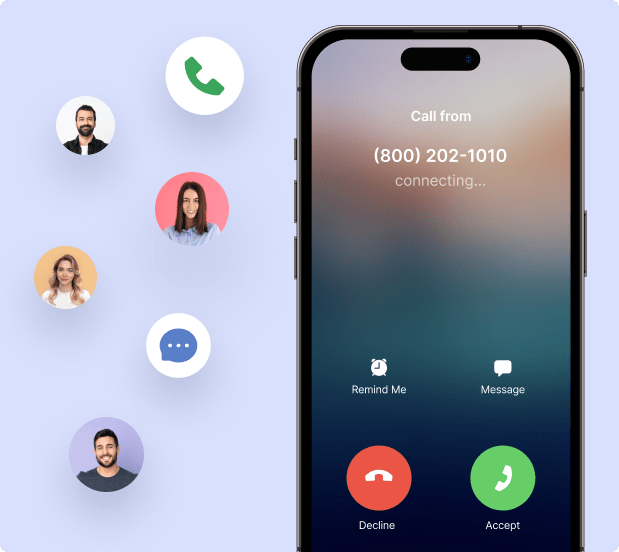
iTeleCenter provides a virtual phone number and phone services specially designed for small businesses. Get a Canadian virtual phone number in no time with iTeleCenter.
Frequently asked questions
Is Canada +1 for phone numbers?
Yes, the country code for calling Canada is +1. Canada shares this with the US and other NANP countries.
What is an example of a Canadian phone number list?
A Canadian phone number list usually consists of a mix of both landline and mobile phone numbers. Some examples are +1 (604) 765-4321 for Vancouver, BC, and +1 (416) 765-4321 for Toronto, ON.
How many digits are in a Canadian phone number?
There are a total of 11 digits in Canadian phone numbers, including +1 as country code, a 3-digit area code, a 3-digit exchange code, and a 4-digit station or line code.
Which country code is +1 647?
+1 is the country code of Canada and other NANP countries, while 647 is an area code that is assigned to Toronto, Ontario.
What are example Canada numbers?
Here are a few examples of Canadian phone numbers for different regions:
- Calgary, Alberta: +1 403 555-3456
- Ottawa, Ontario: +1 613 555-7890
- Montreal, Quebec: +1 514 555-9012
How to write a Canada mobile number?
To write a Canada mobile number, follow the format “+1 (Area Code) 7-Digit Number”.
How do I get a temporary Canada phone number?
You can get a temporary Canada phone number by using virtual phone services like iTeleCenter, TextMe, Google Voice, etc.
Table of Contents
Test drive iTeleCenter for free
Try for free
